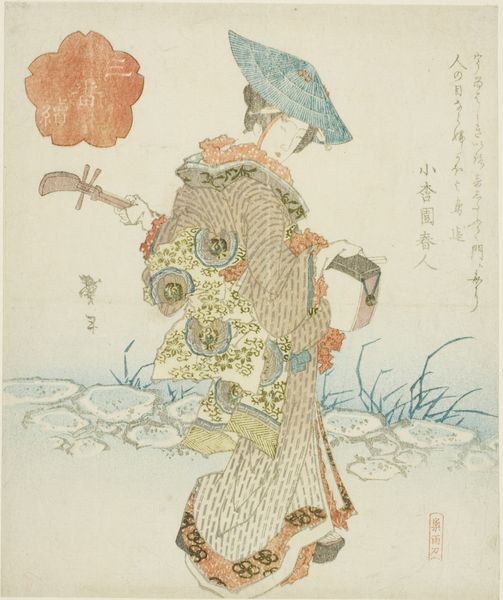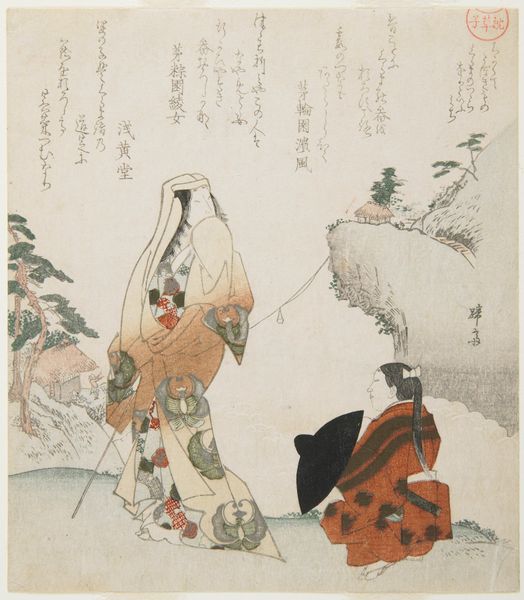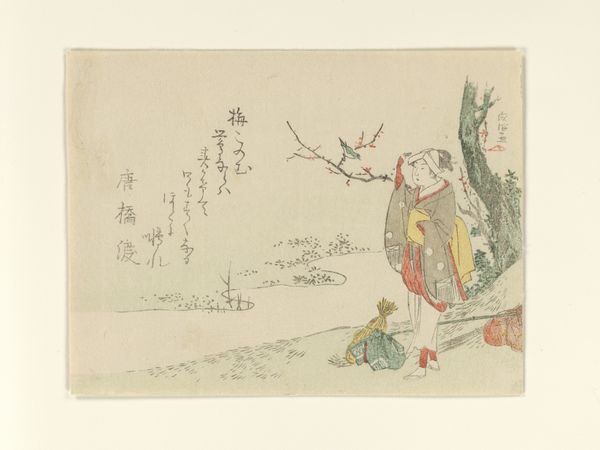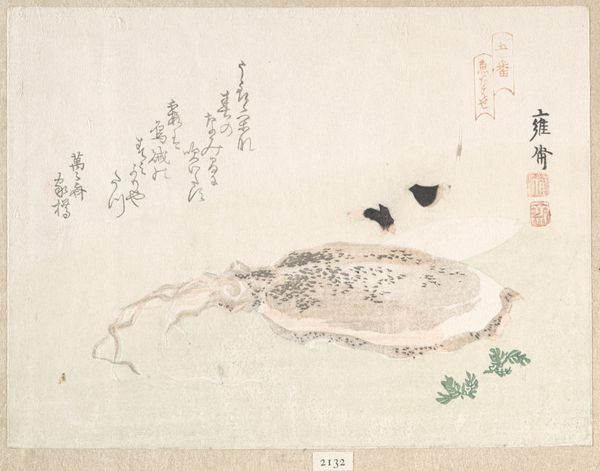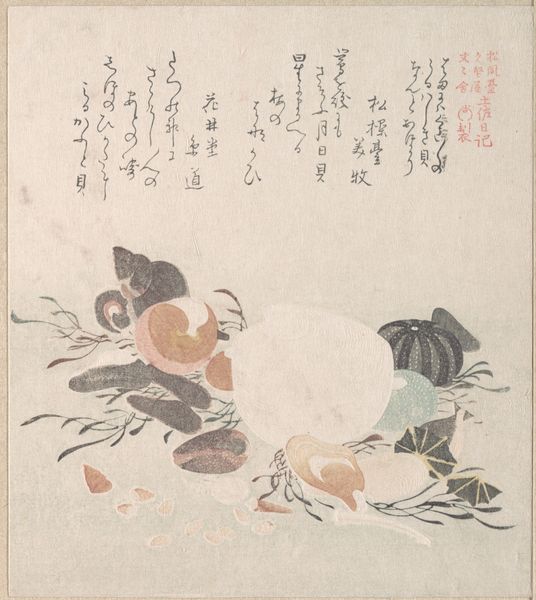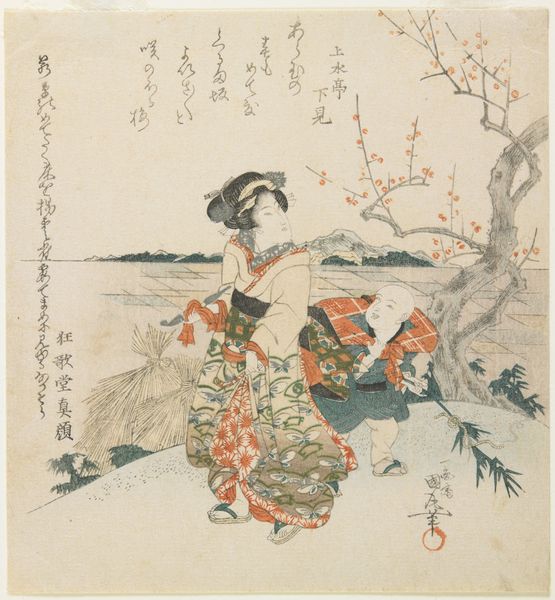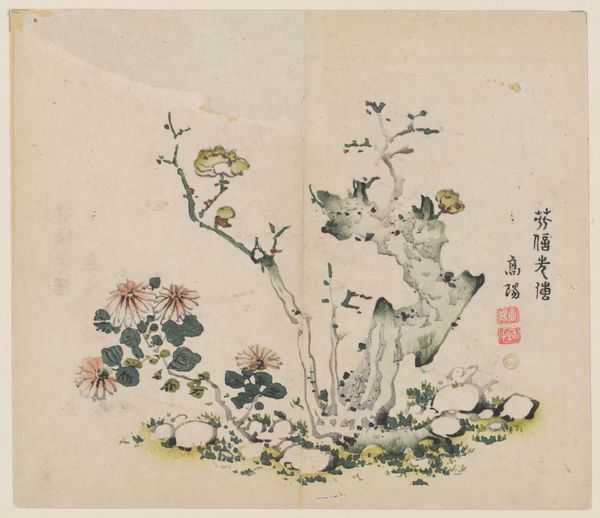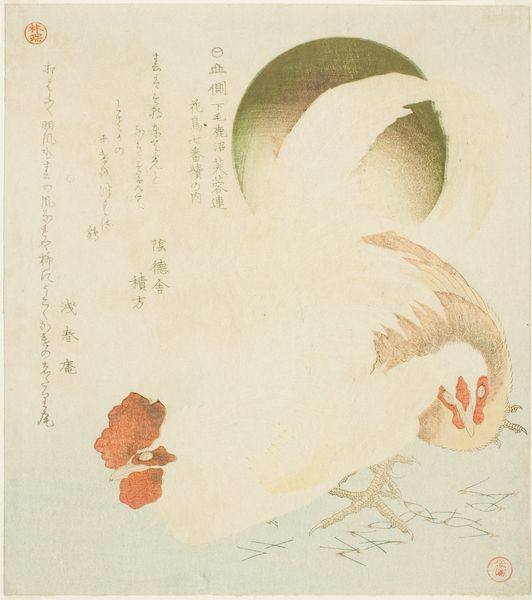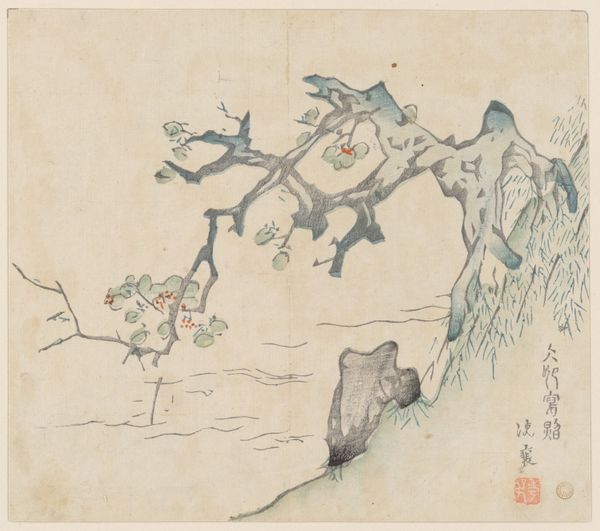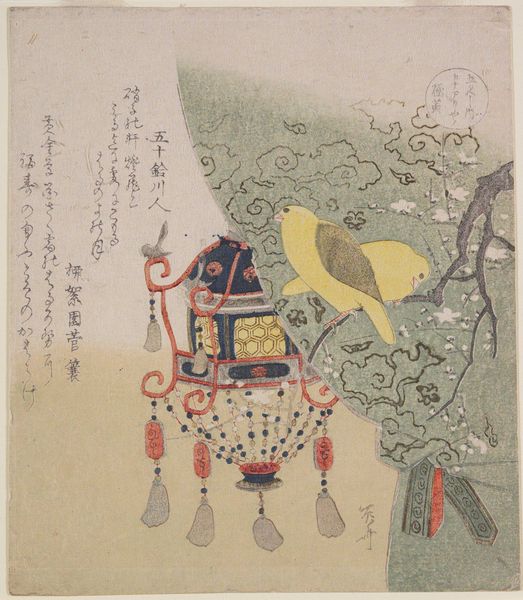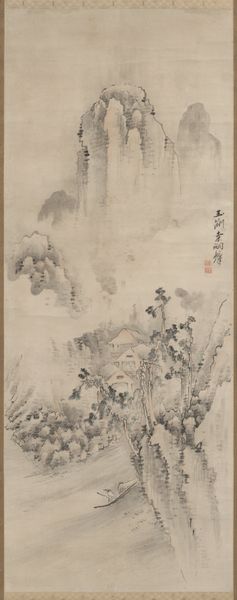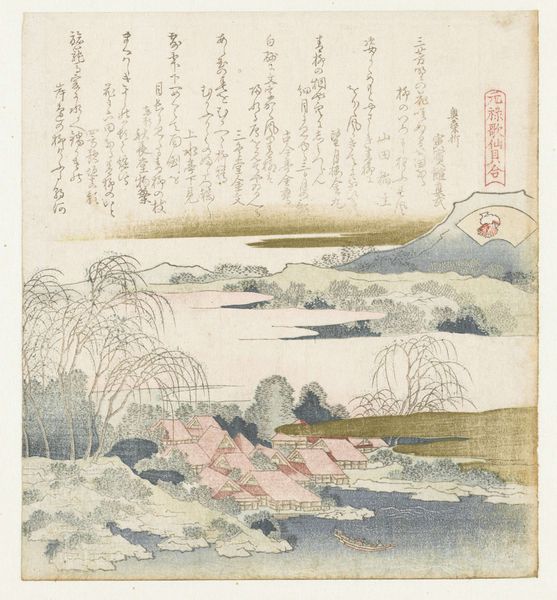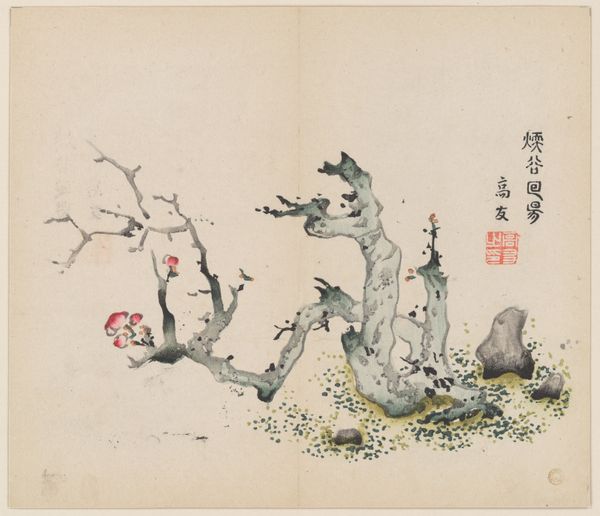
Chrysanthemum Boy leaning on a rock, from the series "Five Prints on Longevity (Kotobuki goban no uchi) c. mid 1820s
0:00
0:00
print, watercolor, woodblock-print
# print
#
asian-art
#
landscape
#
ukiyo-e
#
figuration
#
watercolor
#
woodblock-print
#
orientalism
Dimensions: 21.5 × 18 cm (8 7/16 × 7 1/16 in.)
Copyright: Public Domain
Curator: We're looking at a woodblock print by Yanagawa Shigenobu, dating from the mid-1820s. It's called "Chrysanthemum Boy leaning on a rock, from the series 'Five Prints on Longevity.'" Editor: Oh, that’s just beautiful. It’s like a hazy dreamscape. So soft, everything kind of melts into everything else. There’s this almost melancholic peace about it. Curator: Shigenobu worked within the ukiyo-e tradition, and this is a striking example. What I find fascinating is how the artist combines figuration and landscape here. We have this elegant figure leaning contemplatively on a massive, almost overpowering rock. Editor: Yes, the scale is quite clever. He’s dwarfed by the rock formation itself. And you can almost feel the weight of it, the material density. Those gentle colors are quite deceiving in that regard, considering it’s depicting geology. And is that a waterfall in the background? Curator: It is indeed. It reinforces this idea of longevity and permanence juxtaposed with the fleeting beauty, maybe even melancholy, you sensed. Notice the detailing on the boy's robe, the precise pattern work, it creates visual intrigue, but also contrasts with the more amorphous shapes of the natural landscape. It shows the attention that someone took to create such an appealing work. Editor: Right, that detailed craftsmanship. Each little choice in inks must have mattered immensely. Ukiyo-e wasn't some spontaneous creation, even though they sometimes had a light touch. Curator: Absolutely. And this piece is from a series focused on longevity, so this scene might be implying a journey, of weathering, even if gently. We get the boy with an almost ambiguous androgyny, a hint towards classical orientalism in that figuration, plus it suggests perhaps something of his ability to survive hardship. Editor: I wonder what that particular printing would have sold for originally? How that labor was priced in the context of it's time... was this accessible to commoners, or exclusive? I imagine a woodblock in multiple colors involved serious coordination of expertise. Curator: It’s always worth reflecting on the journey and the purpose. This print really strikes a chord with the intersection of nature and humanity, that it can persist and weathers, endures like a dream we sometimes are afraid to relinquish. Editor: Right, it seems so transient and yet so incredibly stable all at once... Food for thought!
Comments
No comments
Be the first to comment and join the conversation on the ultimate creative platform.
